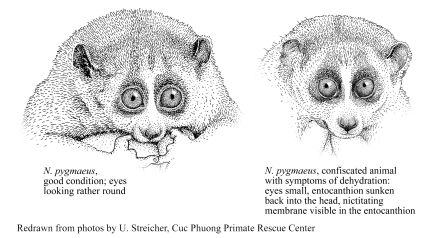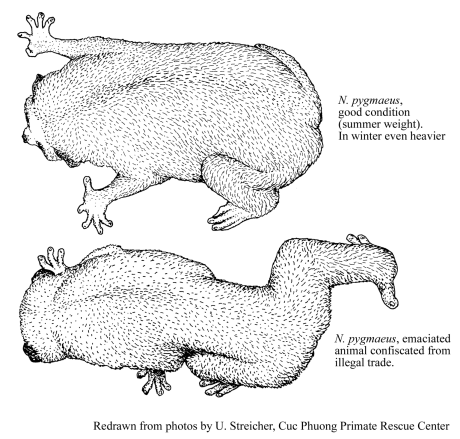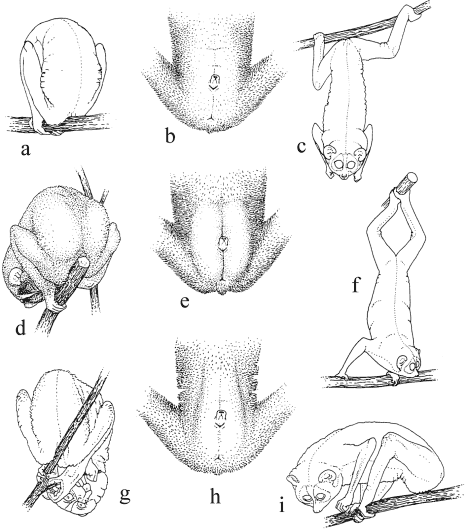

Some measured body weights in N. pygmaeus:
| Home |
|
standard |
Literature |
|
Judgement of nutritional state in Loris
Judgement of the nutritional state and signs of dehydation in Nycticebus pygmaeus


Some measured body weights in N. pygmaeus:
| Head-body-length | Weight data from literature (no information about time of the year) | Normal winter weight | Normal summer weight |
|
18.0-21.0 cm 88.
21.0-29.0 cm 89. |
230-287 g (n=7) 86; 300-450 g 87; fully grown more than 500 g38. Female: 372 g; male: 462 g 89. | Up to 590, 600 g, in one case 630 g 85(measured at the Endangered Primate Rescue Center, Vietnam) |
In summer more slender
85.
(Exact weight?) |
Judgement of the nutritional state in Loris

a-c: normal. d-f:
Location
and visibility of fat deposits in adipose animals. d:
Young male
in sleeping posture, with fat deposits visible on the upper thighs
and
hind parts of the trunk. e: In females, fat deposits are
best visible
on the ventral side, on either side of the clitoris. In breeding
females,
some fat deposits may be advantageous; during lactation, in spite
of abundant
feeding a considerable loss of weight was observed (Meier,
unpublished).
g-i:
signs of emaciation (old animal suffering from kidney disease and
diabetes).
Some body weight data for L. t. nordicus (data by Meier & Schulze, published in Schulze 1998):
|
|
length |
|
|
|
|
|
|
24.5 - 25 cm |
(n = 4), females 269.7 g (n = 5) |
(n = 4), females 322.5 g (n = 5) |
|
226 g |
| Unusually large
animals |
24.5 cm /
26 cm |
- | 430 - 440 g | Up to
482 g, pregnant 490 g |
265 g |
|
Loris
and related
species: health
|
Last amendment: 4 February 2001
|